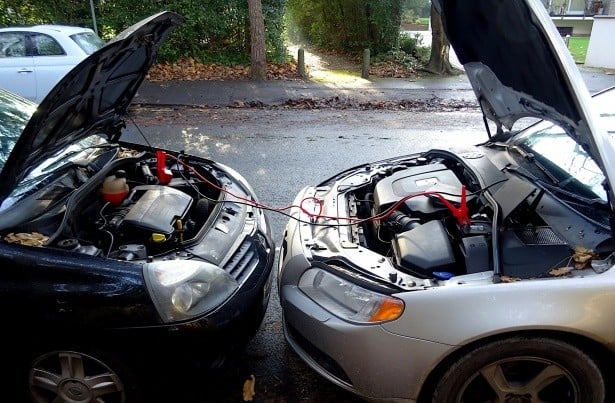How To Jump-start Your Car In 5 Easy Steps

Most of us spend considerable time in our vehicles, whether we are commuting to work, running errands, or just enjoying the scenery. With a do-it-yourself mentality and some tips, you can do nearly anything to your car.
E.g., Consider yourself lucky if your car is stuck in your driveway. You can head inside and make a cup of hot coffee while you contact a mobile mechanic who will inspect and repair the car. If you’re lucky, a neighbor or friend may be able to jumpstart your vehicle with jumper cables.
Jump-starting a vehicle comes with its own dangers. A spark can start a fire in your car’s engine compartment where the battery is. Don’t be scared because, with some patience and knowledge, you can jumpstart your vehicle in minutes.
Jump-starting your car in five easy steps:
Jump-starting a car: Essentials
Keep the following items with you at all times in your vehicle before attempting to jumpstart it:
- Jumper cables
- Heavy duty gloves
- A Flashlight
- Owner’s Manual
After you’ve done all of the above, it’s now time to jumpstart your vehicle. It’s easiest to contact a roadside assistance or mobile car mechanic in Brisbane. You can ask a neighbor or friend to bring their car over if you do not want to pay a penny to get back on the road. You could ask other drivers to assist you if that is not possible. Be cautious and use good judgment when asking for help from strangers. Call a family member or a close friend to let them know where you are and what is happening.
Step 1: Get the cars close together to jump-start a vehicle.
You can make sure that the cables of the jumper can reach the battery of each car by aligning your vehicle next to it. Mechanics say that the best way to do this is to park your car next to the vehicle with a healthy battery. It’s now time to open the hood of your car and find the two batteries.
Step 2: Locate battery terminals.
Locating the terminals of your car’s battery is the second step in jumpstarting it. Each battery has two terminals, usually indicated by a “+,” “-,” or similar sign. You will often find a cap on the positive terminal. Connect the black cable to the negative terminal and connect the cable with the red cap. This step must be done correctly. Connecting the cables in the wrong direction could result in a short circuit on both cars.
Step 3: Connect cables to the battery.
Be careful not to touch the cables when connecting them to the battery. This could spark. This is done by laying the red and black clamps, as well as the jumper cables, on the ground while connecting the other end of the cable to the vehicle with a dead battery.
Caution: Only connect the red clamp to the positive terminal of the battery, while the black clamp should be connected to an unpainted bolt or bracket under your car’s hood. A bracket or bolt in the engine compartment will do.
After the red clamp has been attached to the positive terminal of the dead battery, you can connect the clamps that were placed on the ground to the battery. Make sure the clamps don’t touch each other. It’s now time to attach the black clamp to your engine compartment. By wriggling the clamps, you can check that all clamps are biting the metal portion of the battery. If the clamps are not properly connected, the charge will not flow from the healthy battery to the dead one.
Step 4:It is time to start the engine.
After the four clamps have been attached correctly, you need to make sure that the cables don’t touch any moving parts in the engine compartment. Make sure the cables are not touching the timing chain, fan belt, or fans behind the radiator.
Let the car idle for 15 minutes after starting it with a good battery. The charge will trickle down from the good to the dead batteries. You can now try to start your vehicle. Turn off the ignition, and allow the vehicle to continue idling for 10 minutes before you try again. If your car still doesn’t turn on, the battery may be beyond repair. You will need to replace it immediately.
Step 5: Let your car idle for a few minutes to recharge the dead battery.
Once you’ve managed to start the vehicle with a dead battery, let the other car idle for a couple of minutes. If you can’t get the car to start, but it cranks quickly, check for other problems, like a faulty battery or a full gas tank. The next step is to check that the vehicle with the dead battery still works properly. You can now disconnect the cables the other way around if everything seems to be working well.
Unplug first the black clamp that is attached to a non-painted surface of your engine compartment, then the black and red clamps connected to other vehicles’ battery terminals. Finally, unplug the red clamp on your car’s positive battery terminal.
Ensure that the clamps on each car are not touching one another or any metal surfaces. You can now thank your friend for bringing the car and get on your way!
Are you experiencing frequent breakdowns or other problems? Check out comprehensive car insurance to protect your vehicle from unexpected events such as cold weather, hailstones, fires, thefts, etc.




Leave a Reply